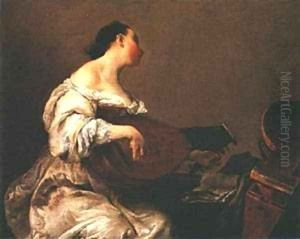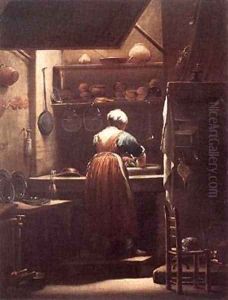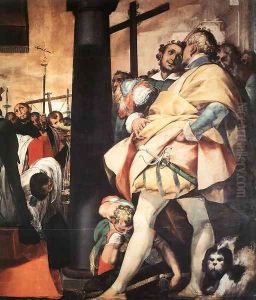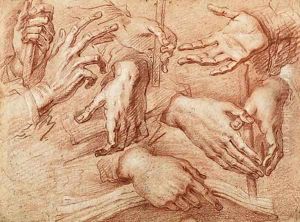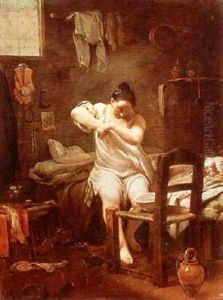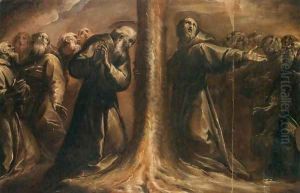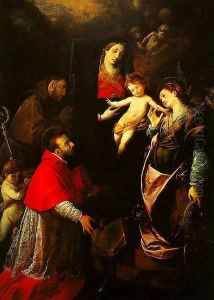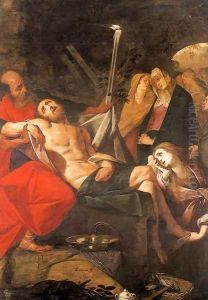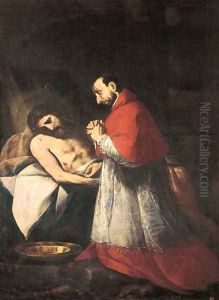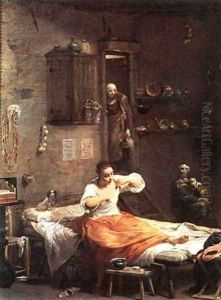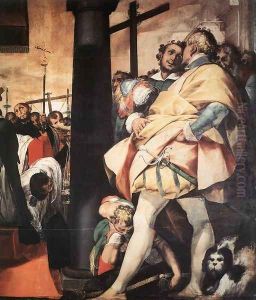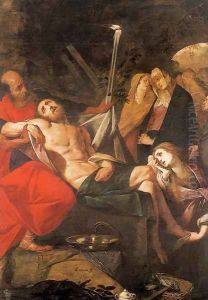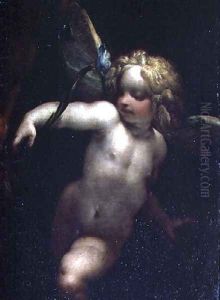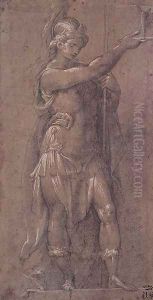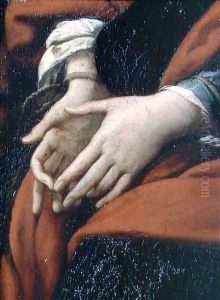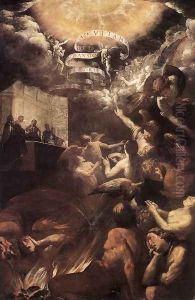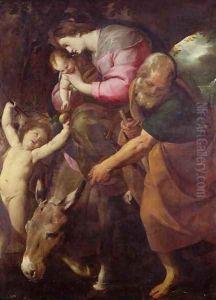Giovanni Battista Crespi (Cerano II) Paintings
Giovanni Battista Crespi, known as Il Cerano or Cerano, was an Italian painter, sculptor, and architect active during the late Renaissance and early Baroque periods. Born in Romagnano Sesia, a small town in the Duchy of Milan, in 1573, Crespi was one of the most important artists of the Lombard school and was influential in the development of the Baroque style in Northern Italy.
Crespi's artistic training began in Milan, where he studied under the guidance of prominent painters of the time. He was initially influenced by the naturalistic styles of Lombardy painters, but his style evolved significantly throughout his career. Crespi traveled to Rome in the early 1590s, where he was profoundly influenced by the works of Caravaggio and the Carracci family. This exposure led to the development of his own distinctive style, which combined Lombard naturalism with the dynamic chiaroscuro and emotional intensity of Caravaggio's work.
Upon returning to Milan, Crespi received numerous commissions for religious and secular works, and he became a leading figure in the Milanese artistic scene. His ability to blend dramatic lighting effects with a keen observation of the human form and emotional expression made his work highly sought after. Some of Cerano’s most notable works include the 'Conversion of Saint Paul' for the church of San Paolo Converso in Milan, and the 'Assumption of the Virgin' for the Cathedral of Novara.
Aside from painting, Crespi was also accomplished in sculpture and architecture. As an architect, he was involved in the design of the facade of the church of San Fedele in Milan. In sculpture, his works display the same dramatic flair and attention to detail found in his paintings.
Cerano's influence extended beyond his own artistic production. He was a respected teacher, and his workshop trained several important painters of the next generation, including Daniele Crespi and Giulio Cesare Procaccini. Giovanni Battista Crespi continued to work and contribute to the cultural life of Milan until his death in 1632. His legacy is that of an artist who played a crucial role in the transition from the Renaissance to the Baroque style in Northern Italy.
